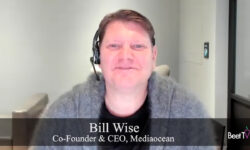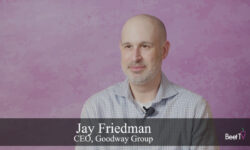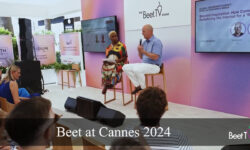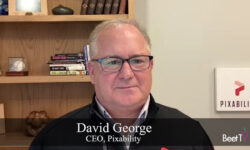David Dworin, VP Advisory Services, FreeWheel highlights findings from a very deep data dive by FreeWheel into the complex subject of creating the optimal video advertising experience for viewers: “We’re realizing that ad experience is more complicated than just cutting the number of ads.”
But while there’s plenty of complication, “There’s actually a lot of other levers that programmers can pull and manipulate in order to deliver a great user experience while also delivering value for their advertisers and making sure they maintain their own businesses,” the head of the premium video company’s advisory practice explains in this interview with Beet.TV.
FreeWheel’s insights derive from the second installment of its new signature insights track titled “Engaging the Viewer: Designing a Winning Ad Experience.” It’s based on two types of data, the first being an aggregation of user experience studies for about 12 clients yielding some 100 different scenarios. The second consists of ad completion rates and viewer engagement metrics representing billions of video starts and ad impressions.
There are many balancing acts, financial and otherwise, at play in the search for an optimal ad experience. Dworin says FreeWheel is motivated by the knowledge that a lot of programmers “are making decisions often in the dark or based on emotion or assumption rather than based on data.”
For example, FreeWheel found that if ad load is cut by 50%, the result is perhaps a 5% to 7% increase in repeat viewership. “But it’s not enough to make up for the fact that you just cut your inventory by fifty percent, Dworin says. “So that’s not revenue-neutral for a programmer if you were to continue to price things the same way.
Moreover, “The viewer experience bump isn’t as large as everybody’s assuming.”
Creative repetition is a “huge deal for viewers.” If someone sees the same creative “three, four, five, six times, you’ll see a twenty to sixty percent drop in ad completion rate relative to the first time you saw it,” he says. “This isn’t people that are leaving the content, this is people that are saying, ‘this is the fifth time I’m seeing this ad I’m turning this off.’”
Other highlights of the research:
Digital platforms have less ad time than linear TV. Cable linear viewers see almost 40% more ads than those watching broadcast programming on digital platforms.
Shorter ads are not always better. Thirty-second and 15-second, pre-roll ads had very similar ad completion rates across platforms, for both full episodes and clips. Ultra-short (e.g. six seconds) ads often serve a different purpose on premium video than longer commercials.
Asked about VOD versus linear TV viewing, Dworin says part of the value in VOD is that users are engaged with the content and don’t tend to channel switch, plus there are fewer ads. “So it’s already a pretty strong viewer experience relative to watching the same content on linear TV, which from a viewer’s perspective is what they would compare it to.”














































